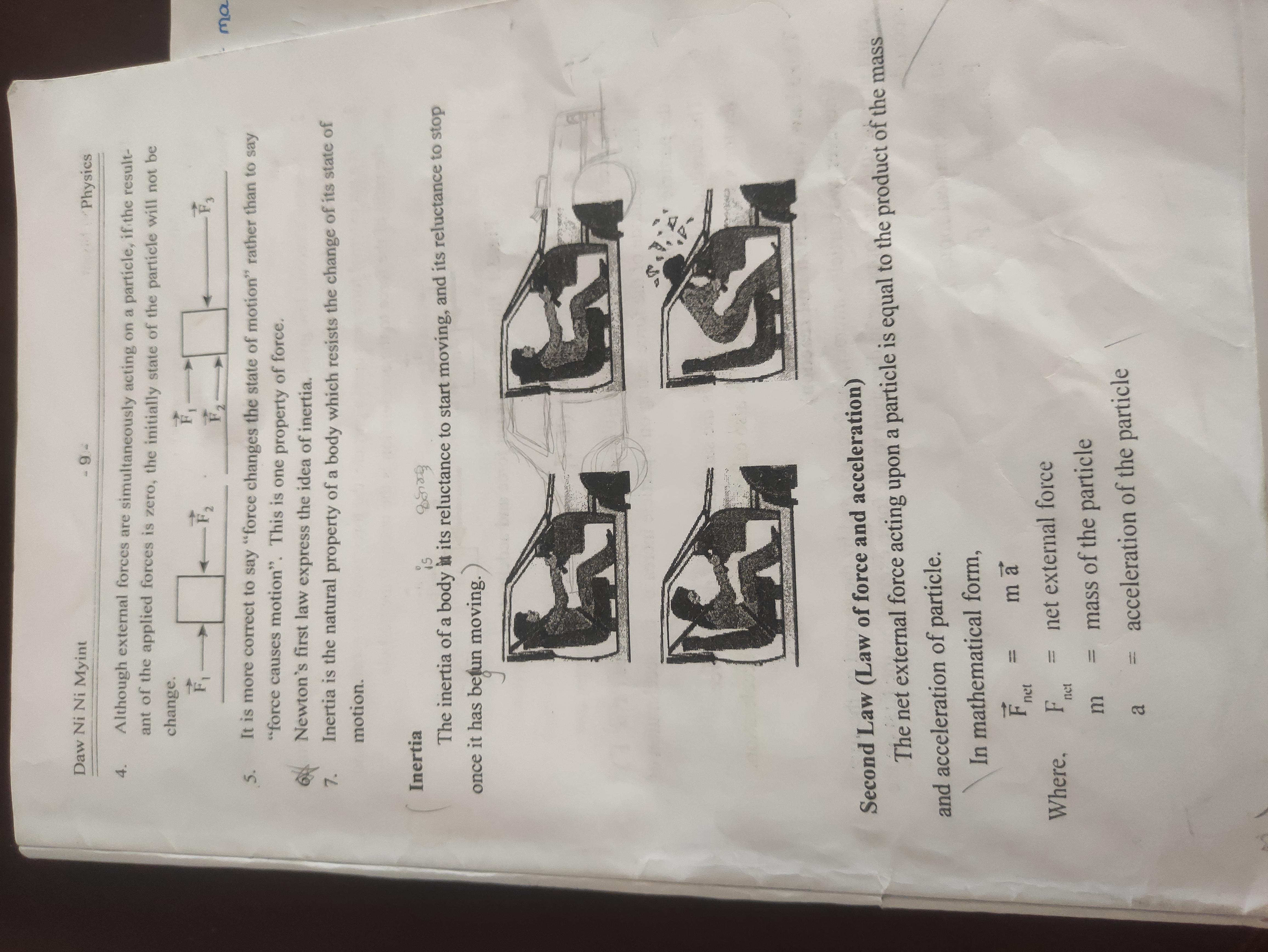What is inertia and how does it relate to the second law of motion?

Understand the Problem
The question concerns the concepts of inertia and the second law of motion in physics, specifically how forces affect motion and the relationship between force, mass, and acceleration.
Answer
Inertia resists motion changes; Newton's 2nd law links force, mass, and acceleration.
Inertia is the tendency of an object to resist changes in its motion. It relates to Newton's second law of motion, which states that acceleration is directly proportional to the net force acting on an object and inversely proportional to its mass. More mass means more inertia, requiring greater force for acceleration.
Answer for screen readers
Inertia is the tendency of an object to resist changes in its motion. It relates to Newton's second law of motion, which states that acceleration is directly proportional to the net force acting on an object and inversely proportional to its mass. More mass means more inertia, requiring greater force for acceleration.
More Information
Inertia is closely tied to mass; more massive objects have more inertia. Newton's second law quantifies how force is needed to change the motion of objects with different inertias.
Tips
Remember that force, mass, and acceleration are always proportionally related; forgetting the inverse relation between mass and acceleration can lead to mistakes.
Sources
- The Physics Classroom - Newton's Second Law - physicsclassroom.com
- Inertia and Mass - The Physics Classroom - physicsclassroom.com
- Newton's Second Law - NASA Glenn Research Center - .grc.nasa.gov
AI-generated content may contain errors. Please verify critical information